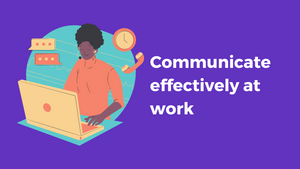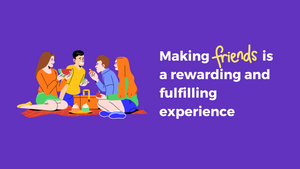
The One Habit That Will Transform Your Life (It’s Not What You Think)
Imagine this: You're asked to take on yet another project at work, even though your plate is already full. Or a friend invites you to a party on a night you desperately need to rest. What do you do? If you're like most people, you might say yes, despite knowing it's not what you want or need. But what if I told you that the single most transformative habit you can adopt is learning to say no? You might think it’s about waking up early, meditating, or exercising daily—those are great habits, but they’re not the one I’m talking about. The habit that will truly transform your life is something simpler yet profoundly powerful: the art of saying no.
Table of Contents
Why Saying No Is So Hard
Let’s start with the obvious: saying no is tough. For many of us, it feels almost unnatural. Why? Because we’re hardwired to help and conditioned to be cooperative. We want to be liked, to be seen as helpful, and we often fear the consequences of saying no—whether it’s disappointing someone, damaging a relationship, or being judged as selfish. As Vanessa Patrick explains in her book The Power of Saying No, we’re social creatures with a need to belong, and saying no can feel like a risk to our relationships or reputation.
Society rewards “yes” people, and we’ve internalized the message that being a good friend, partner, employee, or human means always saying yes. But here’s the catch: constantly saying yes can lead to burnout, resentment, and a life that’s not aligned with your true desires. You end up overcommitted, overwhelmed, and unable to prioritize what truly matters. For example, consider Twyla Tharp, the renowned choreographer, who once agreed to work on a project out of obligation. She spent six weeks struggling, only to realize it was a waste of her time and energy. Her lesson? Obligation is a flimsy foundation for meaningful work—or life.
The Power of Saying No
Now, let’s flip the script. Saying no isn’t just a defensive move; it’s a powerful tool for transformation. When you say no, you’re not just declining a request—you’re protecting your time, energy, and resources. You’re setting boundaries, which are essential for maintaining healthy relationships and achieving your goals. Research published in Nature suggests that providing people with scripts for saying no makes them feel more voluntary in their decisions, reducing the pressure to comply. This means saying no can empower you to take control of your choices.
Think about it: every time you say no to something that doesn’t serve you, you’re saying yes to something that does. You’re creating space for what truly matters—whether that’s rest, family, personal growth, or pursuing your passions. A Harvard Business Review article emphasizes that learning to say no is crucial in today’s collaborative work environments, where requests come from all directions. By saying no, you ensure that when you do say yes, it’s meaningful and authentic.
But saying no isn’t just about you. It’s also about respecting others. When you’re overcommitted and stretched thin, you’re not at your best. You can’t show up fully for the people or tasks that matter most. By saying no, you’re ensuring that your contributions are high-quality and intentional. It’s not selfish; it’s strategic. As one wise saying goes, “Every time you say no to the wrong things, you are saying yes to the right thing” (Medium article).
How to Say No Effectively
So, how do you actually do it? Saying no isn’t just about uttering the word; it’s about doing it in a way that’s empowering and effective. Here are practical strategies, inspired by Vanessa Patrick’s insights:
1. Reframe Your Refusals
Instead of saying “I can’t,” try saying “I don’t.” This small shift changes the narrative from inability to choice. For example, “I don’t do early morning meetings” sounds like a deliberate decision, not a limitation. It’s empowering for you and easier for others to accept. This approach reduces pushback and helps maintain relationships, as it communicates confidence and clarity.
2. Master the ART of Empowered Refusal
Vanessa Patrick introduces the ART framework:
- A for Awareness: Know your values, beliefs, and priorities. What matters most to you? Use this as your guide when deciding whether to say yes or no.
- R for Rules, Not Decisions: Set personal policies to make decisions easier. For example, “I don’t take on new projects on Fridays” or “I don’t commit to plans without checking my calendar first.” These rules simplify your choices and give you conviction.
- T for Totality of Self: Use your body language to reinforce your verbal no. Smile, lean forward, and maintain eye contact. It shows confidence and reduces the likelihood of others pushing back.
3. Use a Cost-Benefit Framework
Before saying yes, ask yourself:
- What’s the cost to me (time, energy, stress)?
- What’s the benefit to the other person?
Categorize requests into a simple framework:
| Request Type | Cost to You | Benefit to Others | Decision |
|---|---|---|---|
| Low-cost, high-benefit | Low | High | Likely Yes |
| High-cost, low-benefit | High | Low | Likely No |
| Low-cost, low-benefit | Low | Low | Consider No |
| High-cost, high-benefit | High | High | Evaluate Carefully |
This framework helps you make informed decisions. For example, passing the salt is low-cost and high-benefit, so it’s an easy yes. Baking a lasagna for a casual acquaintance might be high-cost and low-benefit, so it’s a clear no. Prioritize requests that align with your “hero’s journey”—tasks that allow you to contribute meaningfully.
4. Handle Pushy Askers
Some people are skilled at getting you to say yes. They might insist on face-to-face requests (which are 33 times more likely to get a yes), choose their “home court” (like their office), or demand an immediate response. Counter these tactics by:
- Using technology (email or text) to respond when you’re ready.
- Setting clear boundaries upfront, like “I’ll need to check my schedule.”
- Practicing your “no” in advance so you’re prepared. For example, “I’m not able to help with that right now” is polite yet firm.
The Science Behind Saying No
You might be wondering, “Is this really that important?” The answer is a resounding yes—and science backs it up. Research highlights the benefits of saying no for both personal and professional growth:
- A study in Nature found that providing people with explicit scripts for saying no (like “I’m not able to help with that right now”) makes them feel more voluntary in their decisions. It reduces the pressure to comply and helps override implicit norms of politeness that often lead to overcommitment.
- Psychologists emphasize that setting boundaries through saying no is key to reducing stress and improving mental health. A PMC article notes that learning to say no is essential for career development, particularly for students and early-career scientists who often become overworked.
- The Journal of Personality and Social Psychology suggests that people who struggle to say no are more likely to experience burnout and lower life satisfaction. Conversely, those who set boundaries report higher wellbeing.
These findings show that saying no isn’t just a personal preference—it’s a scientifically supported strategy for a healthier, more balanced life.
Real-Life Examples
Let’s make this concrete with a couple of real-world examples:
- Twyla Tharp’s Lesson: As mentioned earlier, the famous choreographer Twyla Tharp once agreed to choreograph a project out of obligation. She spent six torturous weeks trying to make it work, only to realize it was a waste of time and energy. Her takeaway? Saying no to the wrong things frees you to say yes to what truly matters.
- Oprah Winfrey’s Wisdom: In 1994, Oprah reminded herself to always act from the heart. This principle of “totality of self” means aligning your actions with your true priorities, not just what others expect of you. By saying no to requests that didn’t resonate with her values, Oprah built a career and life of authenticity and impact.
These examples show that saying no isn’t about being unkind—it’s about being true to yourself and your purpose.
Common Misconceptions About Saying No
Let’s address some myths:
- Myth 1: Saying no is selfish. Not true. Saying no is about self-care, which allows you to show up better for others. It’s about quality over quantity in your commitments.
- Myth 2: Saying no will ruin relationships. When done respectfully, saying no can strengthen relationships by fostering honesty and mutual respect.
- Myth 3: You need to say yes to succeed. Success comes from focus and prioritization, not from saying yes to everything. As Harvard Business Review notes, strategic nos are key to becoming indispensable at work.
Practical Steps to Build the Habit
Ready to start? Here’s how to make saying no a habit:
- Start Small: Practice saying no to low-stakes requests, like declining an extra meeting or a social event you don’t want to attend. This builds confidence.
- Prepare Scripts: Have a few go-to phrases ready, like “I’m not able to take that on right now” or “I don’t have the bandwidth for that.”
- Reflect Regularly: At the end of each week, review your decisions. Did you say yes when you should have said no? What can you do differently?
- Seek Support: Talk to a trusted friend or mentor about your goal to say no more often. They can offer encouragement and accountability.
Potential Challenges and How to Overcome Them
Building this habit isn’t always easy. Here are some challenges you might face and how to address them:
- Guilt: You might feel guilty for saying no, especially to people you care about. Remind yourself that saying no is about protecting your wellbeing, which ultimately benefits everyone.
- Pushback: Some people might not take your no well. Stay firm but polite, and use the ART framework to reinforce your decision.
- Habit Formation: Like any habit, saying no takes practice. Be patient with yourself and celebrate small wins.
Conclusion: Start Small, Transform Big
So, what’s the takeaway? The habit of saying no might not sound glamorous, but it’s one of the most transformative habits you can adopt. It’s not about being negative or selfish; it’s about taking control of your life and directing it toward what you truly value. As a PMC article puts it, saying no is a tool for developing boundaries that are essential for success. Start small—practice saying no to low-stakes requests, like declining an extra meeting or turning down a social event you don’t want to attend. Over time, you’ll build the confidence to say no to bigger things that don’t serve you.
Remember, every time you say no to the wrong things, you’re saying yes to the right ones. You’re creating space for joy, growth, and fulfillment. So, the next time someone asks you to do something, pause and consider: Is this a yes that serves me, or should I say no? Trust me, your future self will thank you. Now go out there and start transforming your life—one “no” at a time!




